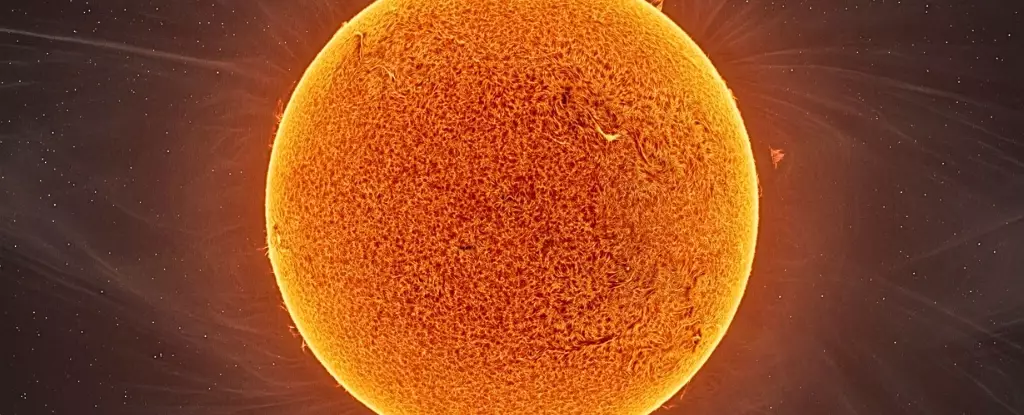Stellar science has always carried a mystical aura, inviting us deeper into the cosmos while simultaneously revealing truths about our very existence. A recent study published in the prestigious journal *Nature* has opened new doors into our understanding of stellar behavior, particularly focusing on the phenomenon of starquakes—vibrations akin to music resonating through the very cores of stars. What makes this research compelling is how it reframes what we think we know about star life cycles, fundamentally altering our perception of galactic history. This breakthrough provides not only a new toolset for astronomers but also a refreshing narrative in a field often bogged down by complexity and technocracy.
The Harmony of Starquakes
Starquakes, which can be likened to the subtle vibrations that take place when bubbles burst on the surface of a boiling pot, manifest in many stars, including our Sun. These stellar symphonies provide a plethora of information about the physical properties and internal structures of these celestial bodies. Just as each instrument in an orchestra contributes to a unique melody, each star resonates with a variety of frequencies, each of which tells a different story about its life and longevity. The researchers harnessed data from the Kepler space telescope’s K2 mission to analyze the frequency signatures of giant stars in the M67 star cluster, a locale rich in chemical composition similar to our Sun and situated nearly 3,000 light-years away.
One of the most groundbreaking insights from this research reveals that giant stars get “stuck playing the same parts of their tune” during a critical phase in their lifecycle. This stagnation occurs when the star’s outer layer reaches a sensitive internal region, fundamentally altering the harmonics of the vibrations it produces. This idea runs counter to previous beliefs, where young stars were thought to be the prime indicators of internal changes. Instead, the stalling frequencies of older stars shed light on internal fusion processes that were previously considered static.
Scientific Implications and Perspectives
The shift in understanding regarding starquakes does more than enrich the academic narrative; it highlights a philosophical shift regarding our relationship with the cosmos. For ages, stellar evolution has been viewed through a rather linear lens; however, this research peels back layers to expose a more chaotic and dynamic reality. Much like human lives, stars don’t always follow a predictable path—they thrive, falter, and sometimes get “stuck.” This truth is disquieting yet freeing; it suggests that there is still much to unravel within both our own existence and the broader universe.
This newfound understanding also presents an unsettling thought: If stars maintain echoes of their tumultuous lives, what does that say about our own environmental imprints? The concept of using starquakes as a historical reference for the Milky Way’s evolution raises ethical questions about our stewardship of Earth. With every quaking note, stars remind us of the cosmic journey that shaped our very reality. It implores us to listen more carefully, both to the stars and to ourselves.
The Broader Cosmic Symphony
The implications of understanding starquakes stretch far beyond astrophysics. By refining methods to assess stellar ages and the events that shaped them, astronomers can craft a more comprehensive narrative about how galaxies—like our own—came to be. As the Milky Way grew by merging with smaller celestial bodies, the distinct ‘voices’ or resonant frequencies of each stellar group provide invaluable insight into the timeline of cosmic events. For those who dwell on the fringes of scientific inquiry, it’s an awe-inspiring reminder that we are all part of a grand celestial story, interconnected through time and space.
The potential for revisiting existing data to extract new insights is exhilarating. Those years of seismic observations now transform into a treasure trove of previously hidden information, allowing scientists to re-examine stellar data with fresh lenses. This is empowering for the scientific community; it suggests that even existing information can yield novel revelations when approached with innovative thinking.
A Call to the Cosmos
This revelation regarding starquakes could similarly serve as a call-to-action for society. As we look to the sky and contemplate our own existence, we should embrace the unending quest for knowledge—an inquisitiveness that stars themselves seem to share. By absorbing these celestial concepts, we become more mindful of our Responsibilities on Earth, understanding that every ripple we create could have effects that echo through time, much like the vibrations of a star. Such revelations compel humanity not only to study the cosmos but to engage with it empathetically, recognizing our shared journey as cosmic travelers.
The narrative of starquakes does not merely pertain to astronomy; it speaks to fundamental truths about existence itself, intertwining science with philosophy in a melodious harmony that resonates through both the stars and our daily lives. By tuning into this celestial symphony, we may just start to understand our own intricate part in the universe.



Leave a Reply